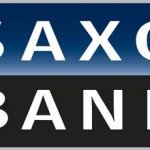Oil to rebound to around $50 by year end – Saxo Bank

Several factors are helping oil prices gain ground
The past two months of oil price volatility have taken its toll on the financial markets, with the main culprits for this dramatic price fall being excess production, concerns about a drop in demand and a surplus stockpile of oil.
The price of oil has been trading around the $40 a barrel range for the past couple of weeks, but the market continues to be nervous that another sizeable move to the downside is quite possible.
Saxo Bank’s overall outlook for oil this year, however, is not so gloomy. According to head of Commodity Strategy Ole Hansen oil will make somewhat of a recovery because of a combination of continued demand growth and falling United States production. This will eventually help create a floor in the market from where it will be able to rally back towards the $50 level mark by year-end.
For the oil price to go higher than $50 a barrel will require a 50 per increase from the lows of January and it’s not realistic.
Russia is the biggest non-OPEC oil producing country and if is open to discussions with OPEC members on stabilising prices by stemming output, this could be the beginning of other non-OPEC countries coming together to work for the greater good of the oil markets. Such a unified action would certainly have a positive effect on the market and support a tick to the upside for oil.
Over-supply of oil is not the only problem affecting the oil market though. February economic data from the world’s industrial powerhouse, China, showed continuing weakness, alongside poor US data, both of which have downward pressure effects on oil. It’s not yet clear if we’ve seen a bottom in these economies, and if the woes continue then oil could quite feasibly be pressured for the short to medium term at least.
The middle of the year will be an important time for the oil markets and it may well herald the beginning of the turnaround for oil. The next OPEC meeting is scheduled for April and a positive announcement from the powerful cartel may act as the catalyst for an emerging trend to the upside.
The Gulf economies are certainly feeling the impact of the low oil price – especially Saudi Arabia which generates around 80 per cent of its budget from oil revenues – and governments are aggressively trying to take action to withstand the falling oil prices. Governments are quickly learning that they need to diversify their economies and to find alternative sources of revenue away from the oil industry.
The United Arab Emirates is a leading example of taking a strategic approach to diversifying the local economy, with free trade zones, international tourism and even initiatives underway to develop the country’s laws. Amongst the laws being deliberated are those governing ownership of companies set up locally here, with ideas on how to make the UAE more attractive for setting up businesses.
While regional currencies have not been the focus of market attention of late, dwarfed by the attention on the oil price, governments are also having to contend with the possibility that further interest rate hikes in the US may also lead to inflationary pressures on the Gulf economies.
When the Federal Reserve announced the interest rate hike in December, they revealed the rate cycle for 2016 was to be for a further three or four rate hikes which could be a problem for Gulf economies. However, that has been reduced to two hikes this year, which will mean a less severe impact on regional economies.
Source: Gulf Business





























